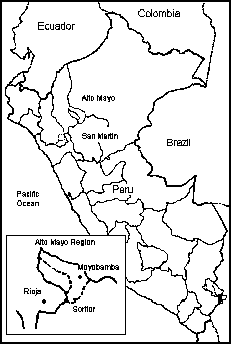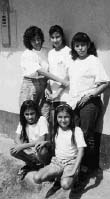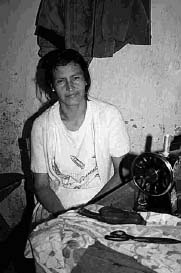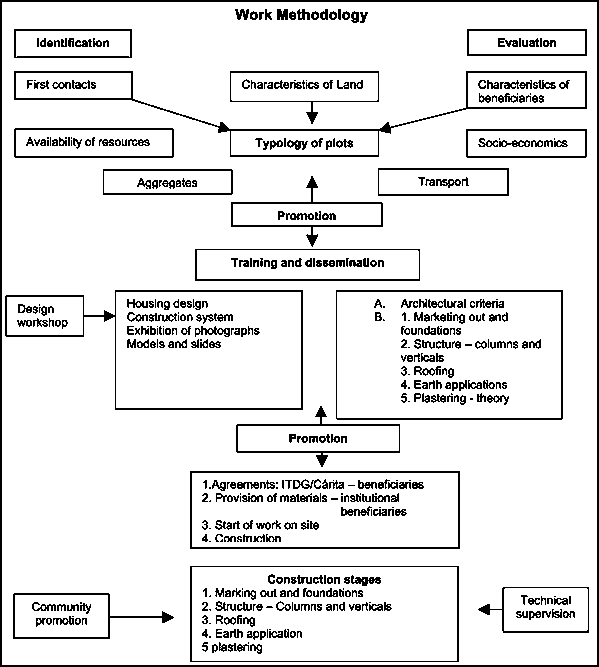Principes de construction résistant aux tremblements de terre : Différence entre versions
(Page créée avec « =Construction résistant aux tremblements de terre - Fiche technique= <div class="booktext"> ==Description brève== *'''Problème:''' *'''Idée:''' *'''Difficulté:''' *''... ») |
|||
| Ligne 25 : | Ligne 25 : | ||
</div> | </div> | ||
| − | == | + | ==Une catastrophe se produit== |
<div class="booktext"> | <div class="booktext"> | ||
| − | + | Dans la soirée du 29 mai 1990 Alto Mayo (voir Figure 1) a été frappé par un séisme de magnitude 6 sur l'échelle de Richter. Les effets ont été ressentis dans une zone couvrant plus de 8000 kilomètres carrés, le dommage a été subi par 8000 maisons avec près de 3000 irréparablement endommagées. Ces chiffres commencent à suggérer l'ampleur de la perte ressentie par les communautés locales. Dans les capitales de district de La Havane et de Soritor, huit sur dix maisons ont été détruites. | |
| − | |||
<center> | <center> | ||
| − | [[Image:EarthquakeResistant_p001a.gif]]<br /> Figure 1: | + | [[Image:EarthquakeResistant_p001a.gif]]<br /> Figure 1: carte du Pérou |
</center></div> | </center></div> | ||
| − | == | + | ==Reconstruction des communautés== |
<div class="booktext"> | <div class="booktext"> | ||
| − | Practical Action | + | Practical Action est une organisation axée sur la réalisation à long terme, le développement durable et ne s'engage pas aux secours des sinistrés. Toutefois, Practical Action (alors appelée ITDG) est bien placée pour aider aux efforts de reconstruction, le personnel ayant travaillé dans la région étaient bien connus par la population locale. En partenariat avec des organisations locales Practical Action a établi des relations et des amitiés qui leur ont permis de devenir rapidement impliqués dans la préparation d'un plan de reconstruction. |
<center> | <center> | ||
| − | [[Image:EarthquakeResistant_p001b.jpg]]<br /> Figure 2: | + | [[Image:EarthquakeResistant_p001b.jpg]]<br /> Figure 2: : l'impact du tremblement de terre sur une maison tapial à Soritor © Practical Action / Megan Lloyed-Laney |
</center> | </center> | ||
| − | + | L'intervention de secours a été la mission de Caritas Pérou, une organisation de l'Eglise soutenue par un réseau international d'organisations concernées par le travail humanitaire. Compte tenu de la perturbation de la vie quotidienne causée par le tremblement de terre, Practical Action a reconnu l'opportunité de créer des avantages à long terme et a pris soin d'examiner comment les gens pourraient participer à la reconstruction des habitations. La reconstruction doit se poursuivre à un rythme auquel les gens peuvent se permettre et en même temps répondre aux besoins de la population pour leur survie économique ainsi que leur besoin d'abri. Practical Action a dû être certaine que les activités se déroulent conformément à la priorité locale publique populaire et ne soient pas dominés par des pressions extérieures et des ordres du jour. | |
| − | Practical | + | L’intervention de Practical Action a débuté par la reconstruction de la ville de Soritor (voir carte). Cette décision a été choisie comme point de départ pour deux raisons: l'étendue des dommages subis dans la ville était relativement élevée comme ce fut pour le niveau d'organisation communautaire. Les structures sociales existaient, ce qui a permit à Practical Action de consulter la communauté locale malgré l'effet perturbateur de ce tremblement de terre. Après des réunions communautaires entre les ingénieurs et les spécialistes des sciences sociales, ceux-ci ont élaboré un plan de reconstruction pour la région d’Alto Mayo, qui a été ensuite présenté aux autorités locales. |
</div> | </div> | ||
| − | == | + | ==Mise en route== |
<div class="booktext"> | <div class="booktext"> | ||
| − | + | L'organisation à base communautaire FEDIP (el Frente de Defensa de los intereses del Pueblo de Soritor) avait évolué au cours des années précédentes, pendant les périodes de difficultés économiques, à négocier des prix et à représenter les intérêts des producteurs locaux: leur capacité d'organisation et leurs connaissances se sont avérées critiques dans la réalisation de la réussite du projet. Soritor est divisée en six quartiers, chacun d'entre eux avait un comité de voisinage existant qui a organisé des réunions collectives pour discuter des efforts de reconstruction. L’intérêt FEDIP de lutter pour les intérêts des petits producteurs agricoles voulait dire qu'ils étaient bien conscients des réalités de la vie locale grâce à une structure de comités forts. Ils ont été en mesure de se faire une opinion des personnes et de les représenter au niveau des districts, des provinces et des départements. | |
| − | + | Avec le soutien financier de l'Ambassade britannique et de l'Overseas Development Administration du Royaume-Uni (aujourd'hui le ministère du Développement international), attaché à une documentation technique de chercheurs universitaires et des preuves photographiques de maisons construites en Huacucho, Duval Zambrano et Hermelando Aliaga, par Practical Action, des exercices de consultation ont été entrepris avec les 5000 habitants de Soritor. | |
| − | === | + | ===Planification en partenariat=== |
| + | |||
| + | Au cours de la période initiale de six mois après le tremblement de terre, des efforts axés sur l'opinion publique populaire, leurs idées, leurs aspirations et préoccupations ont été entrepris, afin que ceux-ci puissent être inclus dans la reconstruction et le développement d’Alto Mayo. | ||
| + | Le processus de réunir les gens pour partager leurs opinions a été d’une signification égale, voire plus importante. Ce processus a permis à Practical Action et leurs partenaires de développer des pratiques de relations de travail et les structures organisationnelles afin de tisser des liens avec la population locale au sens large. Le plan de reconstruction n'a pas été considéré comme une solution miracle aux problèmes de logements très apparents, mais comme une occasion de lier les efforts menés après le sinistre directement par des activités de développement à long terme. | ||
| − | |||
<div align="left"> | <div align="left"> | ||
| Ligne 72 : | Ligne 73 : | ||
|- valign="top" | |- valign="top" | ||
| valign="top" | | | valign="top" | | ||
| − | ''' | + | '''María Asencia Salva Sedamano''' |
| − | + | María a vu avec ses filles Kary, Rosa et Zoryisabel, reconstruire sa maison dans la banlieue de Moyobamba, dans un quartier appelé Huacucho. | |
<center> | <center> | ||
| − | [[Image:EarthquakeResistant_p002.jpg]]<br /> Figure 3: Maria | + | [[Image:EarthquakeResistant_p002.jpg]]<br /> Figure 3: Maria reconstruit la maison familiale utilisant de la quincha améliorée. © Practical Action / Lucky Lowe |
</center> | </center> | ||
| − | + | Le processus de reconstruction n'a pas été facile pour María, mais elle sent qu'elle a beaucoup appris de son implication dans cette collectivité. Malgré les pressions considérables de la part de son mari pour reconstruire leur maison en brique et en béton, María a vu le projet de quincha améliorée comme possibilité réaliste de reconstruire un toit sur les têtes de sa famille. Elle a vendu sa machine à coudre pour obtenir le capital nécessaire pour acheter des matériaux de construction. María a été choisie par sa communauté pour représenter leurs points de vue dans les discussions du projet et des négociations. A côté d'un représentant masculin, elle commençait à être impliquée dans une série d'activités qui, dit-elle, a développé ses compétences dans les relations avec les gens et construit sa confiance en soi. | |
| − | + | Le comité de reconstruction du voisinage Huacucho que María a représenté est devenu une coopérative agricole. María a travaillé avec d'autres hommes et femmes à générer des revenus en augmentant le petit bétail, la vente dans le marché local de produits agricoles et des denrées alimentaires faites maison. Pendant une période, elle a également été présidente du Club Mothersâ. Une fois María a senti qu'elle avait joué ces rôles particuliers en matière de dirigeante communautaire pour assez longtemps, elle s'est lancée dans des affaires pour son compte. Ses compétences considérables sont également utilisées en tant que gouverneure de l'école locale fréquentée par ses trois filles. | |
|} | |} | ||
</div></div> | </div></div> | ||
| − | == | + | ==Bénéficiaires== |
<div class="booktext"> | <div class="booktext"> | ||
| − | + | Avec un tel besoin important et immédiat pour la reconstruction, il était crucial pour Practical Action d’être sûre que les gens qui allaient bénéficier du projet étaient ceux qui avaient le plus besoin. Practical Action s'est fortement liée a FEDIP et Caritas pour veiller à ce que la sélection des bénéficiaires du projet soit entreprise d'une manière objective et soit considérée comme équitable. Initialement, le sentiment était que tout le monde au niveau local a été victime du tremblement de terre et que chacun devrait donc bénéficier également d'une aide. Toutefois, il est vite apparu que certaines personnes avaient plus de ressources à leur disposition que d’autres. | |
| − | Practical Action | + | Le personnel de Practical Action n’a pas décidé qui étaient les bénéficiaires du projet, pourtant le personnel servait souvent d’intermédiaire entre les différentes parties lors de négociations complexes. Les membres des comités de quartier ont été consultés en premier lieu, et on leur a demandé d'écrire une liste de 30 à 35 chefs de famille. Les gens sur cette liste ont ensuite été classés par agent de la liaison communautaire de Practical Action en quatre catégories:<br /> |
<blockquote> | <blockquote> | ||
| − | + | * fermiers riches, p. ex.: 5 ou plus d'hectares de terres rizicoles<br /> | |
| + | * employé, p. ex.: professeur <br /> | ||
| + | * agriculteurs pauvres, p. ex.: moins de 2 hectares <br /> | ||
| + | * les plus pauvres, p. ex.: sans terre, veuves. <br /> | ||
| + | |||
</blockquote> | </blockquote> | ||
| − | <br /> | + | <br /> Cette liste de personnes a été ensuite transmise à l'ordre de religieuses qui ont fait les derniers ajustements et décidé qui devraient être les bénéficiaires. |
| + | |||
| + | Un problème immédiat que Practical Action eut à affronter était la croyance largement répandue que les intervenants externes, comme Practical Action et Caritas fourniraient tous les matériaux nécessaires; 1990 était une année électorale et les politiciens à l'élection aurait pu encourager les gens à croire que des maisons neuves seraient librement disponibles. | ||
| + | Un niveau d'attente élevé existait dans certains esprits que le rôle de Practical Action était un fournisseur de logements: ils doivent construire les maisons pour les personnes et en remettre les clefs à son achèvement. Practical Action croit fermement qu'il est plus utile d'aider les gens à s'aider eux-mêmes et à aider au renforcement des capacités technologiques afin que les gens aient des avantages dans à long terme, après que le projet de Practical Action soit terminé. | ||
| − | + | ===Choix des constructions=== | |
| − | === | ||
| − | + | Au cours du début des discussions, il n'était pas clair quelles technologies de construction seraient choisies. On aurait pu faire valoir que la résistance aux séismes était le seul critère régissant les choix techniques à apporter. Toutefois, Practical Action croit que le développement durable dépend de beaucoup plus de solutions techniques prédéterminées. | |
| − | + | Par l’usage de dessins, de manuels, de photographies et de vidéos de projets pilotes de logements dans d'autres régions du Pérou, le personnel du projet a été en mesure de démontrer des technologies du bâtiment. Une série de réunions a abouti à un niveau croissant de compréhension entre les partenaires du projet, leurs rôles respectifs et la nature du soutien qui a été offert, ainsi que des besoins qui relient les priorités à la conception et à la technologie. | |
| + | |||
| + | Les technologies utilisées pour construire des maisons ne peuvent pas être considérées séparément de leur contexte social ou économique. Bien que le personnel de Practical Action puisse voir les avantages à travailler avec l'amélioration des technologies locales, ils étaient également conscients du fait que les gens aient tendance à préférer les matériaux nobles, comme la brique cuite et le béton armé. Ces technologies modernes sont d'un statut plus élevé, une plus grande durabilité et une valeur financière à long terme. Toutefois, à cause des tremblements de terre, des techniques de construction résistantes ont été nécessaires. Beaucoup de maisons se sont effondrées lors de tremblements de terre mais la quincha (un genre de clayonnage et torchis) a démontré sa résistance inhérente aux séismes. Le besoin de logements à prix abordables, disponibles localement et un abri sûr a remporté l'argument: les ingénieurs de projet de Practical Action et les hommes et les femmes ont décidé que la quincha améliorée était un choix préférable et techniquement possible. | ||
| − | |||
<div align="left"> | <div align="left"> | ||
| Ligne 123 : | Ligne 131 : | ||
<center> | <center> | ||
| − | [[Image:EarthquakeResistant_p004.jpg]]<br /> Figure 4: Olympia Guerra | + | [[Image:EarthquakeResistant_p004.jpg]]<br /> Figure 4: Olympia Guerra travaillant à la maison © ITDG / Lucky Lowe |
</center> | </center> | ||
| Ligne 322 : | Ligne 330 : | ||
[[Category:Household]] [[Category:Village]][[Category:Neighbourhood]] [[Category:School]] | [[Category:Household]] [[Category:Village]][[Category:Neighbourhood]] [[Category:School]] | ||
[[Category:Principles]] | [[Category:Principles]] | ||
| − | |||
| − | |||
Version du 5 février 2010 à 16:05
Sommaire
Construction résistant aux tremblements de terre - Fiche technique
Description brève
- Problème:
- Idée:
- Difficulté:
- Game de prix:
- Matériel nécessaire:
- Secteur géographique:
- Compétences:
- Combien de personnes?
- Combien de temps cela prend-il?
Introduction
The fundamental need for shelter can be easily recognised: people must have protection from the elements, somewhere to grow as a family, a place to work from and a home to call their own. In many countries people do not have the resources to buy houses built by professionals but rely on their own labour, using local materials to build their homes gradually. People make improvements and extend their houses as family requirements change and resources permit.
Une catastrophe se produit
Dans la soirée du 29 mai 1990 Alto Mayo (voir Figure 1) a été frappé par un séisme de magnitude 6 sur l'échelle de Richter. Les effets ont été ressentis dans une zone couvrant plus de 8000 kilomètres carrés, le dommage a été subi par 8000 maisons avec près de 3000 irréparablement endommagées. Ces chiffres commencent à suggérer l'ampleur de la perte ressentie par les communautés locales. Dans les capitales de district de La Havane et de Soritor, huit sur dix maisons ont été détruites.
Reconstruction des communautés
Practical Action est une organisation axée sur la réalisation à long terme, le développement durable et ne s'engage pas aux secours des sinistrés. Toutefois, Practical Action (alors appelée ITDG) est bien placée pour aider aux efforts de reconstruction, le personnel ayant travaillé dans la région étaient bien connus par la population locale. En partenariat avec des organisations locales Practical Action a établi des relations et des amitiés qui leur ont permis de devenir rapidement impliqués dans la préparation d'un plan de reconstruction.
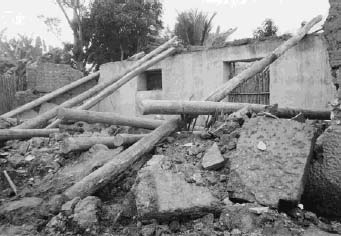
Figure 2: : l'impact du tremblement de terre sur une maison tapial à Soritor © Practical Action / Megan Lloyed-Laney
L'intervention de secours a été la mission de Caritas Pérou, une organisation de l'Eglise soutenue par un réseau international d'organisations concernées par le travail humanitaire. Compte tenu de la perturbation de la vie quotidienne causée par le tremblement de terre, Practical Action a reconnu l'opportunité de créer des avantages à long terme et a pris soin d'examiner comment les gens pourraient participer à la reconstruction des habitations. La reconstruction doit se poursuivre à un rythme auquel les gens peuvent se permettre et en même temps répondre aux besoins de la population pour leur survie économique ainsi que leur besoin d'abri. Practical Action a dû être certaine que les activités se déroulent conformément à la priorité locale publique populaire et ne soient pas dominés par des pressions extérieures et des ordres du jour.
L’intervention de Practical Action a débuté par la reconstruction de la ville de Soritor (voir carte). Cette décision a été choisie comme point de départ pour deux raisons: l'étendue des dommages subis dans la ville était relativement élevée comme ce fut pour le niveau d'organisation communautaire. Les structures sociales existaient, ce qui a permit à Practical Action de consulter la communauté locale malgré l'effet perturbateur de ce tremblement de terre. Après des réunions communautaires entre les ingénieurs et les spécialistes des sciences sociales, ceux-ci ont élaboré un plan de reconstruction pour la région d’Alto Mayo, qui a été ensuite présenté aux autorités locales.
Mise en route
L'organisation à base communautaire FEDIP (el Frente de Defensa de los intereses del Pueblo de Soritor) avait évolué au cours des années précédentes, pendant les périodes de difficultés économiques, à négocier des prix et à représenter les intérêts des producteurs locaux: leur capacité d'organisation et leurs connaissances se sont avérées critiques dans la réalisation de la réussite du projet. Soritor est divisée en six quartiers, chacun d'entre eux avait un comité de voisinage existant qui a organisé des réunions collectives pour discuter des efforts de reconstruction. L’intérêt FEDIP de lutter pour les intérêts des petits producteurs agricoles voulait dire qu'ils étaient bien conscients des réalités de la vie locale grâce à une structure de comités forts. Ils ont été en mesure de se faire une opinion des personnes et de les représenter au niveau des districts, des provinces et des départements.
Avec le soutien financier de l'Ambassade britannique et de l'Overseas Development Administration du Royaume-Uni (aujourd'hui le ministère du Développement international), attaché à une documentation technique de chercheurs universitaires et des preuves photographiques de maisons construites en Huacucho, Duval Zambrano et Hermelando Aliaga, par Practical Action, des exercices de consultation ont été entrepris avec les 5000 habitants de Soritor.
Planification en partenariat
Au cours de la période initiale de six mois après le tremblement de terre, des efforts axés sur l'opinion publique populaire, leurs idées, leurs aspirations et préoccupations ont été entrepris, afin que ceux-ci puissent être inclus dans la reconstruction et le développement d’Alto Mayo. Le processus de réunir les gens pour partager leurs opinions a été d’une signification égale, voire plus importante. Ce processus a permis à Practical Action et leurs partenaires de développer des pratiques de relations de travail et les structures organisationnelles afin de tisser des liens avec la population locale au sens large. Le plan de reconstruction n'a pas été considéré comme une solution miracle aux problèmes de logements très apparents, mais comme une occasion de lier les efforts menés après le sinistre directement par des activités de développement à long terme.
Bénéficiaires
Avec un tel besoin important et immédiat pour la reconstruction, il était crucial pour Practical Action d’être sûre que les gens qui allaient bénéficier du projet étaient ceux qui avaient le plus besoin. Practical Action s'est fortement liée a FEDIP et Caritas pour veiller à ce que la sélection des bénéficiaires du projet soit entreprise d'une manière objective et soit considérée comme équitable. Initialement, le sentiment était que tout le monde au niveau local a été victime du tremblement de terre et que chacun devrait donc bénéficier également d'une aide. Toutefois, il est vite apparu que certaines personnes avaient plus de ressources à leur disposition que d’autres.
Le personnel de Practical Action n’a pas décidé qui étaient les bénéficiaires du projet, pourtant le personnel servait souvent d’intermédiaire entre les différentes parties lors de négociations complexes. Les membres des comités de quartier ont été consultés en premier lieu, et on leur a demandé d'écrire une liste de 30 à 35 chefs de famille. Les gens sur cette liste ont ensuite été classés par agent de la liaison communautaire de Practical Action en quatre catégories:
- fermiers riches, p. ex.: 5 ou plus d'hectares de terres rizicoles
- employé, p. ex.: professeur
- agriculteurs pauvres, p. ex.: moins de 2 hectares
- les plus pauvres, p. ex.: sans terre, veuves.
Cette liste de personnes a été ensuite transmise à l'ordre de religieuses qui ont fait les derniers ajustements et décidé qui devraient être les bénéficiaires.
Un problème immédiat que Practical Action eut à affronter était la croyance largement répandue que les intervenants externes, comme Practical Action et Caritas fourniraient tous les matériaux nécessaires; 1990 était une année électorale et les politiciens à l'élection aurait pu encourager les gens à croire que des maisons neuves seraient librement disponibles. Un niveau d'attente élevé existait dans certains esprits que le rôle de Practical Action était un fournisseur de logements: ils doivent construire les maisons pour les personnes et en remettre les clefs à son achèvement. Practical Action croit fermement qu'il est plus utile d'aider les gens à s'aider eux-mêmes et à aider au renforcement des capacités technologiques afin que les gens aient des avantages dans à long terme, après que le projet de Practical Action soit terminé.
Choix des constructions
Au cours du début des discussions, il n'était pas clair quelles technologies de construction seraient choisies. On aurait pu faire valoir que la résistance aux séismes était le seul critère régissant les choix techniques à apporter. Toutefois, Practical Action croit que le développement durable dépend de beaucoup plus de solutions techniques prédéterminées.
Par l’usage de dessins, de manuels, de photographies et de vidéos de projets pilotes de logements dans d'autres régions du Pérou, le personnel du projet a été en mesure de démontrer des technologies du bâtiment. Une série de réunions a abouti à un niveau croissant de compréhension entre les partenaires du projet, leurs rôles respectifs et la nature du soutien qui a été offert, ainsi que des besoins qui relient les priorités à la conception et à la technologie.
Les technologies utilisées pour construire des maisons ne peuvent pas être considérées séparément de leur contexte social ou économique. Bien que le personnel de Practical Action puisse voir les avantages à travailler avec l'amélioration des technologies locales, ils étaient également conscients du fait que les gens aient tendance à préférer les matériaux nobles, comme la brique cuite et le béton armé. Ces technologies modernes sont d'un statut plus élevé, une plus grande durabilité et une valeur financière à long terme. Toutefois, à cause des tremblements de terre, des techniques de construction résistantes ont été nécessaires. Beaucoup de maisons se sont effondrées lors de tremblements de terre mais la quincha (un genre de clayonnage et torchis) a démontré sa résistance inhérente aux séismes. Le besoin de logements à prix abordables, disponibles localement et un abri sûr a remporté l'argument: les ingénieurs de projet de Practical Action et les hommes et les femmes ont décidé que la quincha améliorée était un choix préférable et techniquement possible.
Origins of quincha and technology development
Quincha technology has been used in parts of Peru for many centuries. Traditionally, a quincha house would have a round pole frame which was set directly into the ground, infilled with smaller wooden poles and interwoven to form a matrix which is then plastered with one or more layers of earth. Since 1535, the Spanish colonisers employed quincha for building domes on top of massive earthen church walls. The 1746 earthquake, which had a devastating impact upon the city of Lima, triggered much wider use of quincha. After that earthquake, the governors of Peru decreed that any construction above ground floor level should be built of quincha. One can still find older houses in Lima with earth walls at ground floor level and a quincha structure above.
In the Alto Mayo region, a large proportion of the population have immigrated from the mountainous region of Cajamarca where massive earthen architecture predominates. The collective memory of these people did not include experience of earthquakes and their technology choices reflected their earthquake-free homelands.
An earthquake in 1970 produced renewed interest in earthquake-resistant building technologies. During the 1980s researchers at the Catholic University, the National Engineering University and the National Institute of Housing of Peru, supported by the United States Agency for International Development, investigated ways of improving upon traditional building materials and housing systems: they focused in particular on quincha technology.
The results of investigating quincha technology in a university environment were new designs with increased earthquake resistance. Research highlighted methods of improving durability and creating standardised construction units. Housing units were designed to include uniform measurements of 1.2m between structural columns which were made of square timber sections (200mm x 200mm).
Practical Action engineers drew on this academic research when presenting the improved technology to the men and women of Soritor. Technical details were soon adapted once Practical Action project engineers and technicians started work in Alto Mayo. For example, timber poles replaced the square columns as they are more readily available and do not require machinery or labour to process them from their raw state.
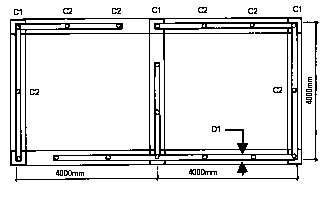
Figure 5: Plan view ©Practical Action/Duval Zambrano/J. Cuizano
Improved quincha has the following characteristics over and above traditional quincha:
- concrete foundations to give greater stability.
- wooden columns treated with tar or pitch to protect against humidity, concreted into the ground with nails embedded in the wood at the base to give extra anchorage.
- use of concrete wall bases to prevent humidity affecting the wood and the canes in the walls.
- careful jointing between columns and beams to improve structural integrity.
- canes woven in a vertical fashion to provide greater stability.
- lightweight metal sheet roofing to reduce potential danger to occupants from falling tiles.
- nailing of roofing material to roof-beams; tying of beams and columns with roof wires to guard against strong winds and earth movements.
- roof eaves of sufficient width to ensure protection of walls against heavy rains.
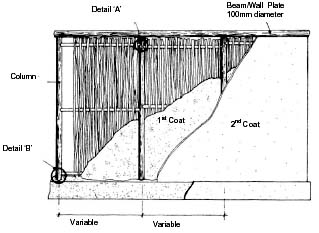
Figure 6: Wall construction ©Practical Action/Duval Zambrano/J. Cuizano
Improved quincha has many advantages in addition to earthquake resistance. Easy access to materials and low cost were of primary concern to Practical Action and to local men and women. The local availability of timber poles, bamboo and earth means that improved quincha is more suited to a self-help building programme than many alternatives.
People’s participation
After the initial project phase Practical Action planned to demonstrate improved quincha in a real project (seeing is sometimes believing). A community building was erected in central Soritor. It took six months to build this structure, which resulted in this technology being nicknamed ‘delayed quincha’ rather than ‘improved quincha’.
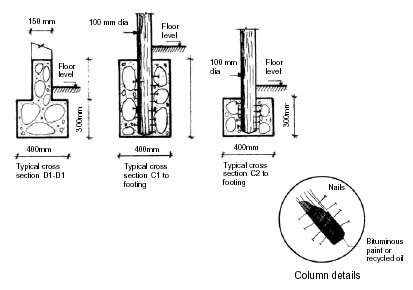
Figure 7: Details of the footings ©Practical Action/Duval Zambrano/J. Cuizano
However, the slow approach was deliberate. It takes time to fully involve a diverse and numerous group of people in a construction project. A team of ten to fifteen men and women from different neighbourhoods were involved in the construction process every week. This led to greater awareness and an increased understanding of how the technology was used: many people learnt the details of construction and the skills required to successfully complete an improved quincha building. In addition to manual labour the community also provided the bulk of materials which were sourced locally.
Practical experience of working with this technology during the demonstration meant that Practical Action staff and members of the community were able to ‘learn by doing’. This resulted in new thinking and some changes: for example, the first coat of plaster put onto the woven infill panels was found to crack, so rather than allow cracks to develop naturally, the first layer of plaster was deeply scored to allow for the shrinkage upon drying and to provide a better grip for the second coat of plaster.
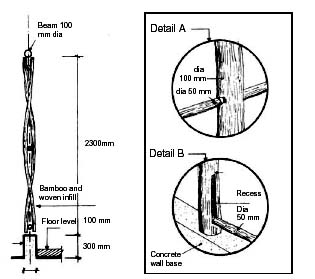
Figure 8: Cross section ©Practical Action/Duval Zambrano/J.
|
Specifications Concrete pad and strip foundations: Render1st coat - mud: straw |
In the Alto Mayo region self-help construction remains the predominant method of building houses. Individual household members help each other to construct their homes and also help other households in the same community. If structures are for communal use then every household in the community assists in the building process. This has recently become less common as more people have formal jobs and are unable to devote their own time. Often craftsmen will be employed on a casual basis to complete specialist tasks and oversee the building process. Practical Action’s ways of working had to reflect traditional approaches whilst taking into account the constraints of modern life.
Building the community centre introduced the improved quincha technology to those directly involved in the construction process as well as to the many observers who stopped by to watch the work progress. The opportunity to collaborate in a practical task also created understanding between project staff, local people, organisations and authorities.
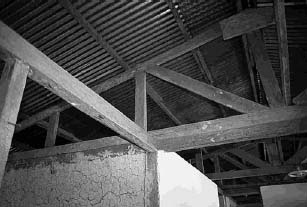
Figure 9: Careful jointing between columns and beams improves structural integrity ©Practical Action/Chris Martin
Designing a new home
Following the demonstration phase a series of activities concentrated on designing houses with people. By working with men and women in small groups, architectural and building professionals used colour coded wooden blocks to model design options and produced plans for a core housing unit. It was essential that the design remained sufficiently flexible so as to be adaptable to specific family requirements, to incomes, to materials available, to land features and to any unexpected factors which may arise.
By modelling their ideas people could create their preferred house in miniature. Their design was drawn up by an architect and then adjusted once more with input from household members. These activities were undertaken within specific neighbourhoods and served to plan the subsequent work, identify materials required and engage people in the whole reconstruction process.
Building work started once materials had been gathered and transported to all the group members’ plots. Groups of 20 - 25 people formed construction teams; they worked in turns on each other’s plots until all the houses were completed. This work usually proceeded at weekends thus allowing for family responsibilities, agricultural work and people’s jobs during the week. When people were available, work would also proceed during week days.
At the beginning of the project it was assumed that people could provide materials such as aggregate, sand, timber and bamboo in addition to any salvaged materials from their damaged dwelling. If an individual member of the group had insufficient resources to contribute others would often assist. When individuals had no agricultural land from which to harvest bamboo or timber they would have to transport materials from distant forests.
Transport was often a problem for people; in some cases the local authorities or other donor projects would lend their vehicles for transportation of sand from the local river bed. ITDG and Cáritas provided sufficient additional materials to the people in most need (galvanised iron sheeting, nails and cement) to build a 30m2 housing unit.
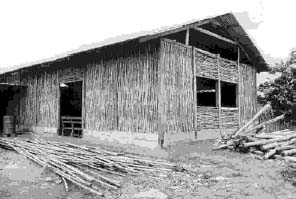
Figure 10: The Community building in Soritor during construction ©Practical Action/Rumi Velaclliaga
Despite these efforts to explain and promote this technology scepticism towards improved quincha remained - it was after all an unknown technology that had little social standing (seeing is not always sufficient to be convinced of the value of new technologies, especially when resources are very limited). A significant factor in improving the popularity and acceptance of improved quincha technology was another earthquake, in April 1991. The total toll on local housing amounted to 17,000 damaged units. The first locally built examples of improved quincha demonstrated their improved resistance to the impact of earthquakes and served to convince many more people of the appropriate nature of this technology.
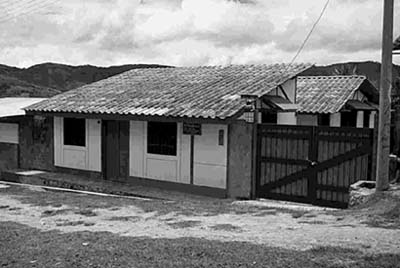
Figure 11: Improved quincha building in Jepelacio ©Practical Action/Lucky Lowe
Project impact
The direct intervention in reconstruction activities by Practical Action and Cáritas ceased in March 1994 and had, by that time, resulted in 558 improved quincha houses being built in the Alto Mayo province. There are also many thousands of improved quincha houses which have been built by men and women, independently of the project. The 1993 national census estimated that quincha formed just 7% of the national housing stock but within the project area this figure rose to nearly 30%.
|
José Louis Mego As the projects focus moved from one neighbourhood to another and then to new towns and villages, ITDG had to develop new relations and adapt their ways of working to the changing political climate and different social organisations. Practical Action’s Social Promoter, José Louis Mego, was a critical success factor in ensuring a continuous, effective working relationship with people wherever the reconstruction work was undertaken. José Louis took time to live in the communities where he worked, learning their customs and dialect, as well as their skills and knowledge. He came to appreciate the exact nature of the constraints people faced in meeting the challenge of rebuilding their homes and lives. When the evidence of ongoing friendships is clear to see, it is not surprising that José Louis believes the most significant factor in engaging people in project activities is ‘to learn their way of life and get to know, respect and be welcomed into the homes of people’. José Louis’s academic training and experience as a sanitation technician mean he is well qualified to advise people on health issues. His efforts to enhance people’s understanding of the projects aims and broader health matters, by regularly hosting a local radio programme, not only served to keep people informed but also, by ensuring his programmes were entertaining, engaged people in the project. Working in a community liaison role is not always easy. José Louis often felt as though he were everyone’s ‘handkerchief’ (shoulder to cry on!). He needed to be both creative and flexible to respond to and cope with the diversity of needs and circumstances of the numerous individuals concerned. |
The accurate costing of self-build houses can be a little misleading unless people are able to put a monetary value on their own involvement; this is not often the case. However, a comparison cost of an improved quincha house and a brick house gives an indication of the relative prices of these two technologies. The estimated cost of a finished building (30m2) of improved quincha including doors, windows, floor, ceiling, external plaster and painting (at 1996 prices) is 3,313 soles or US$1,299. The equivalent structure made of brick would cost 13,772 soles or US$5,400 - the need to contract skilled labour is a significant proportion of this cost.
In conclusion
ITDG was directly involved in the reconstruction of several hundred houses but there are several thousand more in the area which are made of improved quincha or a variation of it. Technology development continues. Practical Action’s intervention is not the only force driving technology change. People’s needs, knowledge and technical capacity, local resources, political and personal agendas are all factors promoting change and technological development.
Innovations in quincha technology are no exception; the ‘improved quincha’ housing promoted by ITDG and partners, can be seen widely in Alto Mayo but it differs in design and detailing, reflecting the materials, skills and individual priorities of the owners and builders. In practical development projects it would be easy to imagine that the end product is the main goal: the end result needs to be a comfortable, affordable and safe house. However, the way in which you work towards that practical goal can have an important impact on people’s lives. ITDG’s staff and partners showed the need and ability for patience, flexibility and perseverance: people and processes are complex. Practical Action seeks to ensure control of the agenda remains with the community and to work in partnership, ensuring people understand the choices they are making and developing their long-term technological capacity.
Reference and further reading
This Howtopedia entry was derived from the Practical Action Technical Brief Earthquake Resistant Housing in Peru" written by Lucky Lowe and produced by ITDG (now Practical Action) in 1997.
To look at the original document follow this link: http://www.practicalaction.org/?id=technical_briefs_construction
- Mud Plasters and Renders Technical Brief, Practical Action
- Building with Bamboo: A Handbook by Jules J. A. Janssen, ITDG Publishing, 1995, ISBN 1 85339 203 0
- Los Planes de Preparación de Emergencia, Technical Brief, Practical Action Latin America
- Emergency Preparedness Plans Technical Brief, Practical Action Latin America
- Risk Mapping, Technical Brief, Practical Action Latin America
- Terremotos en el Trópico húmedo. La gestión de los desastres del Alto Mayo, Practical Action Latin America
- Estructuras Resistentes a Desastres Practical Action Latin America
- Practical Action Latin America
Casilla Postal 18-0620, Lima 18, Peru. Tel: (+51) 1 4467324/4447055, Fax: (+51) 1 4466621 - De terremotos, derrumbes e inundados. LA RED
- Red de Estudios Sociales en Prevención de Desastres en América Latina (LA RED) http://www.desinventar.org/
- Affordable, Quake-Proof Adobe Housing in Peru, IDRC - International Development Research Centre http://www.idrc.org.sg/en/ev-2689-201-1-DO_TOPIC.html
- Volcanoes and earthquakes - Disaster Prevention in Latin America, IDRC - International Development Research Centre http://www.idrc.org.sg/en/ev-2686-201-1-DO_TOPIC.html
- IDRC - International Development Research Centre
P.O. Box 8500 Ottawa, Ontario, Canada K1G 3H9. Tel: +1 613 236 6163, Fax: +1 613 567 7748
The Canadian organisation IDRC (International Development Research Centre) CRDI (Centre de recherches pour le développement)
Useful addresses
Practical Action
The Schumacher Centre for Technology & Development, Bourton on Dunsmore, RUGBY, CV23 9QZ, United Kingdom.
Tel.: +44 (0) 1926 634400, Fax: +44 (0) 1926 634401
e-mail:practicalaction@practicalaction.org.uk web:www.practicalaction.org

